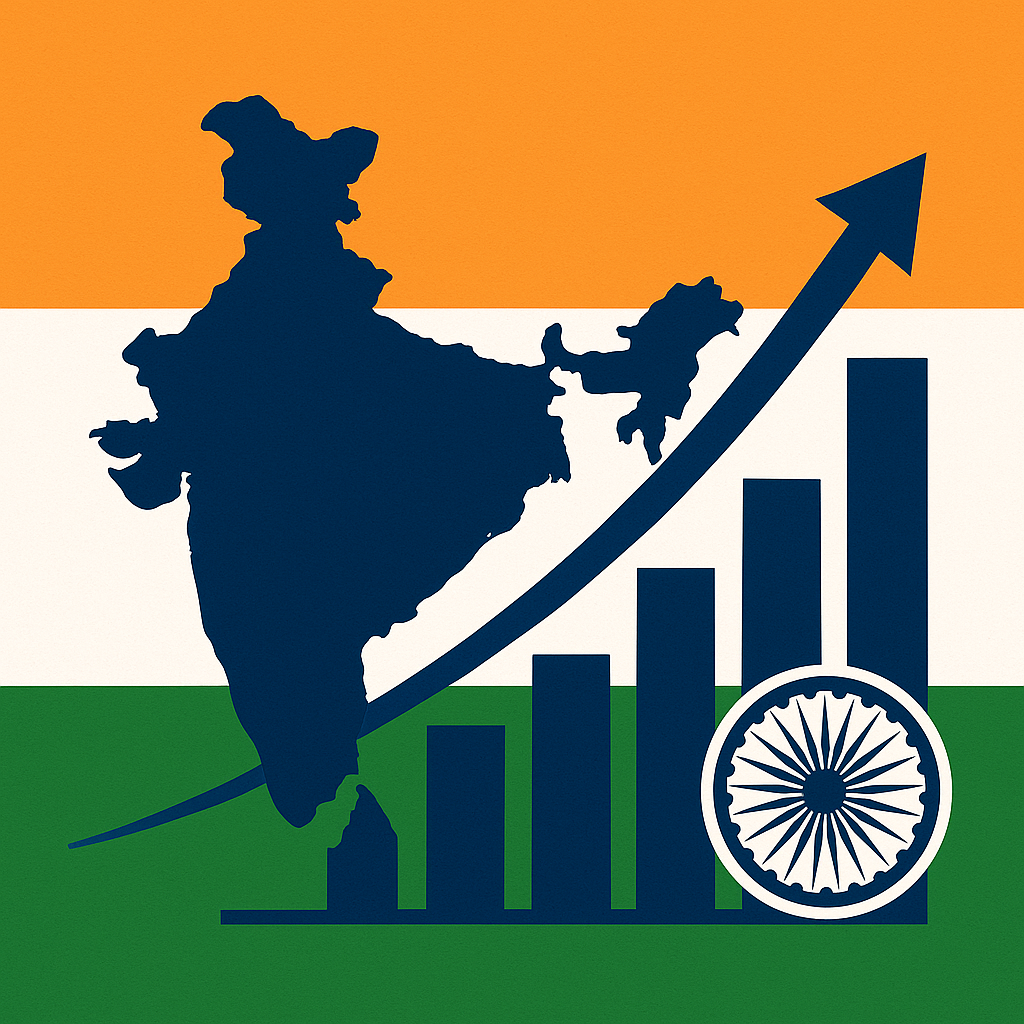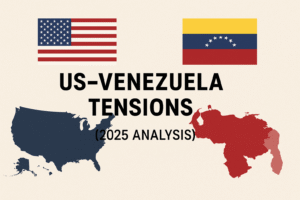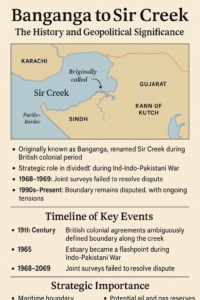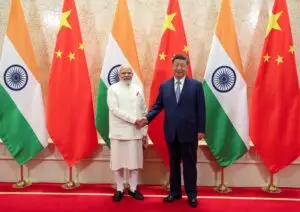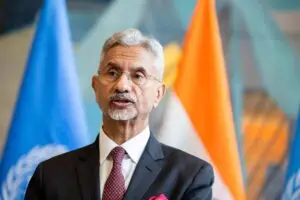Not long ago, former US President Donald Trump bluntly referred to India as a “dead economy.” The remark shocked many — not only because of its dismissive tone but also because it came from the head of a country often considered India’s strategic partner. Soon after, the United States imposed tariffs on Indian goods, an indirect attempt to pressure India into making compromises on its sovereignty and adjusting its foreign policy to suit American interests.
But history has shown one thing again and again: India does not bend easily.
Breaking Expectations: India’s Growth Story
In the first quarter of FY26 (April–June), India’s GDP grew at an impressive 7.8%, outperforming most major economies in the world. This was not just a statistic — it was a powerful response to those who doubted India’s resilience. For context:
- The US economy grew around 2–3% in the same period.
- China, once seen as the engine of global growth, has been slowing due to internal challenges.
- The European Union struggles with energy dependence and sluggish demand.
India’s growth stood out as a symbol of determination. It showed that despite external pressures like tariffs or supply chain disruptions, the country could still deliver results that surpassed global expectations.
However, it would be a mistake to assume that tariffs and international challenges have no impact. They do — but the real question is how India manages to adapt and convert obstacles into opportunities.
The Lesson of Over-Dependence
The entire episode with tariffs highlighted a key lesson: over-dependence on any single country, especially the US, is risky. For too long, India’s trade and strategic alignments have leaned heavily on certain powers. This makes the economy vulnerable to sudden policy changes or political statements.
The way forward is clear — India must:
- Diversify its trade partners.
- Strengthen ties with the Global South, Africa, and Southeast Asia.
- Build domestic industries strong enough to reduce external dependency.
Self-reliance doesn’t mean isolation; it means ensuring no single country can hold us hostage with economic or political threats.
A Call for Self-Reliance
Economic resilience begins with us — the citizens. Supporting Indian products, industries, and innovations will only make the nation stronger. This isn’t just about patriotism; it’s about practical economics. Every rupee spent on Indian products circulates within the country, creating jobs, supporting entrepreneurs, and reducing dependence on imports.
At the same time, responsibility goes beyond economics:
- Keeping our surroundings clean. Throwing garbage in a dustbin is not just about hygiene — it’s about respecting our nation.
- Protecting infrastructure. Roads, public spaces, and government facilities are not “someone else’s property”; they belong to us all.
- Upholding values. India is respected globally not only for its markets but for its culture, democracy, and heritage.
As Atal Bihari Vajpayee once said, “India lives in every Indian.” Similarly, in Thor: Ragnarok, Odin reminds Thor that “Asgard is not a place, it’s its people.” The same is true for India. A nation is not just its borders or GDP figures, but the collective spirit, values, and responsibility of its people.
Shared Responsibility: Leaders and Citizens
It is easy to think that the future of the country lies only in the hands of leaders like Prime Minister Narendra Modi or External Affairs Minister S. Jaishankar. But this is only half the truth. A nation’s progress is equally the responsibility of its people.
If each of us:
- Keeps our cities clean,
- Supports Indian industries,
- Respects diversity and unity,
- And lives by the values of honesty, hard work, and discipline…
…then no external force can undermine our growth. An Indian becomes truly beautiful not through appearances, but by living responsibly and carrying forward the values that define us.
The Weight of History
It has been less than 80 years since independence. For centuries, foreign powers exploited not just India’s wealth but also its culture, traditions, and values. Colonialism didn’t only drain our economy — it attempted to weaken our spirit.
Yet, India rose.
From a struggling post-independence economy, we are now pushing forward with the strength of a $4 trillion economy. The elephant, often used as a metaphor for India’s slow-moving economy, is no longer slow. It is moving, and it is moving with momentum.
Challenges Ahead
Of course, the journey will not be without hurdles. Growth may slow in upcoming quarters due to:
- Global uncertainty.
- Inflationary pressures.
- Geopolitical tensions like the US-China rivalry or the Russia-Ukraine war.
But challenges are not setbacks — they are opportunities to learn, adapt, and improve. Every quarter of growth, whether strong or weak, is a stepping stone towards building a more resilient economy.
Conclusion: Pride and Responsibility
India’s story is not about proving Donald Trump or any other critic wrong. It is about proving ourselves right. With 1.4 billion people, a young workforce, a thriving digital economy, and a rich heritage, India is destined to play a central role in the 21st century.
The responsibility lies with both our leaders and each one of us. If we uphold our values, support our industries, and live responsibly, then no one will ever dare to call India a “dead economy” again.
Because the truth is this: India is alive, thriving, and unstoppable.
Sources :
World Bank – India Economy Overview
IMF – India Growth Projections
Read AbouT Agni 5 – https://newsarmour.com/category/defence-news-updates/

